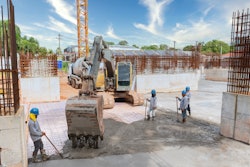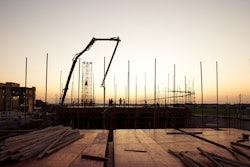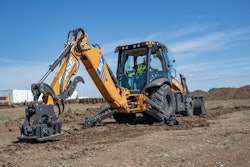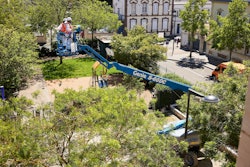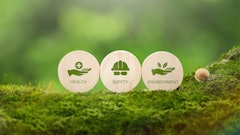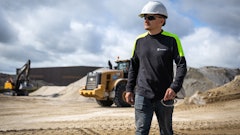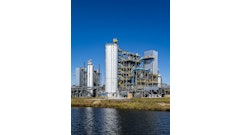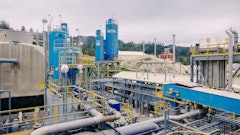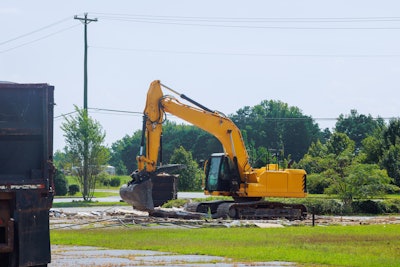
The built environment, including our homes, workplaces, schools, and community spaces, is more than just a bunch of buildings. These are the places we live, the community where we connect, and the environment where we grow.
It’s also a space that’s expanding rapidly.
2.6 trillion square feet of new floor area is expected to be built globally between 2020 and 2060, the functional equivalent of adding New York City to the planet every month. Put differently, 75 percent of the infrastructure that will exist by 2050 hasn’t been built yet.
The implications for climate change, communities, and economies are enormous, as the built environment is one of the most significant contributors to climate change.
Federal, state, and local governments are taking action to help ensure this construction boom (and its climate impact) benefits everyone – from the architects and builders to buyers and communities who will live, work, and play in these places long after the project is complete.
For example, last year, California enacted SB 253 and SB 261, two regulations requiring many companies in California to disclose greenhouse gas emissions and climate-related financial risks, increasing transparency and accountability requirements.
Builders should assume their work will be impacted by these and similar regulations, viewing state standards, such as those in California, as indicative of broader trends with potential nationwide impact that can improve outcomes for their companies and the communities they serve. To navigate this shift, it’s essential to incorporate sustainable practices into present and future projects.
Here are five best practices for making sustainability a part of every construction project.
1. Pursue and Prioritize Green Building Certifications
LEED standards, the most widely used green building rating system globally, provide a framework for creating healthy, efficient, and cost-saving green buildings.
Developed by the US Green Building Council to evaluate and certify sustainable buildings, LEED standards have been applied to 197,000 building projects globally, reaching 186 countries and territories.
LEED v5 is the latest version of these standards, updating the global benchmark to align with the Paris Climate Accord's 2030 and 2050 targets while addressing issues of equity, health, ecosystems, and resilience in the built environment.
As the US Green Building Council (USGBC) explains, LEED v5 looks to:
● Decarbonize the building industry
● Inspire and recognize adapt and resilient built environments
● Invest in human health and well-being
● Achieve equitable outcomes for all stakeholders
● Support flourishing ecosystems through regenerative development practices.
Other certifications, like ENERGY STAR, are similarly changing and becoming even more relevant to builders and buyers. In addition to certifying appliances and products, entire buildings can become ENERGY STAR certified.
 LEED standards, the most widely used green building rating system globally, provide a framework for creating healthy, efficient, and cost-saving green buildings.@Tada Images - adobe.stock.com
LEED standards, the most widely used green building rating system globally, provide a framework for creating healthy, efficient, and cost-saving green buildings.@Tada Images - adobe.stock.com
These buildings provide long-term savings and quality-of-life improvements for residents, businesses, and communities.
For instance, ENERGY STAR certified buildings use 35 percent less energy and generate 35 percent fewer greenhouse gas emissions than their non-certified counterparts. They also have higher rental and occupancy rates, which enhances their marketability and financial performance.
2. Follow the AIA Materials Pledge
A sustainable built environment encompasses every facet of the building, including the materials used in construction.
That’s why the American Institute of Architects (AIA) introduced the AIA Materials Pledge in 2019. This pledge represents a comprehensive commitment by architects and industry professionals to prioritize materials that contribute to a healthier, more sustainable, and equitable future. Participating firms in the Materials Pledge commit to supporting:
● Human health
● Social health and equity
● Ecosystem health
● Climate health
● A circular economy.
The Materials Pledge is descriptive, not prescriptive.
Architects and their building partners have wide latitude in applying these principles, and the metrics generated from these initiatives will help develop best practices that set the standards for future building projects.
This underscores the importance of involving everyone – from architects and interior designers to engineers and subcontractors – in the development and building process as early as possible, understanding that sustainability is an all-in effort requiring all stakeholders to contribute their expertise toward creating a built environment that supports communities for generations to come.
3. Implement a Waste Management Plan
Waste is inevitable in new construction, renovation, and infrastructure upgrades. Yet, how construction teams manage this waste, maximizing recycling opportunities and minimizing environmental impact, can greatly enhance sustainability opportunities on any construction project.
A good construction waste management plan (WMP) will minimize a project’s environmental footprint, lower overall costs, and help builders achieve green building certifications. The components of a comprehensive WMP include:
● Who: Who will be your hauler? Who will conduct regular inspections of containers and staging areas? Who will remove contaminants?
● How: How can your team reduce waste through design choices and during construction? How will they be recycled?
● Where: Where will the hauler take the materials? What happens to materials destined to be recycled once they leave your site?
● What: What can your hauler provide, such as a letter outlining how they divert waste and where it goes, to ensure these materials won’t end up in a landfill? What reports will you use for disposal and diversion rates?
Construction entities prioritizing waste management make their projects and communities more sustainable. The benefits are multifaceted and far-reaching.
As the Environmental Protection Agency (EPA) explains, reducing construction waste and effectively managing its disposal reduces the environmental impact of producing new materials, supports job creation, and lowers overall building project expenses.
It’s a win-win-win for builders, communities, and climate outcomes.
4. Track and Report M/WDBE Participation
Working with Minority, Women, and Disadvantaged Business Enterprise (M/WDBE) businesses promotes diversity, equity, and inclusion in the construction sector, and is a growing requirement on many construction sites. It’s also a way for the entire construction industry to promote economic opportunities in and around the communities where they work.
Proof and documentation are critical, which is why the National Minority Supplier Development Council certifies businesses owned by minorities or otherwise disadvantaged individuals, such as people of color, women, veterans, and other relevant parties.
Also note, that it is important to keep track of the category and contract amount for each certified business. This is vital for ensuring you meet any owner or project requirements, and it helps your organization understand its ESG impact, allowing it to create a plan for continued growth and improvement.
You will need to collect the following information from your M/WDBE subcontractors:
● Company Name
● M/WDBE Category
● Work Period
● Office Location
● Copies of the M/WDBE Certificate
● Material Cost (total contract value in lieu of labor and materials cost).
5. Engage All Stakeholders
Engage community members and construction stakeholders to mitigate climate impact and promote holistic community development, health, and well-being. This includes incorporating community input and soliciting insights from local environmental experts. It also means engaging subcontractors from day one.
Subcontractors perform between 70 and 90 percent of construction work on any given project, making them critical partners in any sustainability effort or certification process. To improve collaboration, consider providing subcontractor training to explain the LEED requirements and how their work contributes to meeting those standards.
Engaging all stakeholders will necessarily look different depending on your projects, community, and intended outcomes, but its impact can be expansive, ensuring that diverse perspectives are involved and accounted for.
Incorporating sustainability into construction practices is no longer optional. It's essential for the future of our communities and the planet.
Every project, no matter how big or small, must echo this fundamental truth: our buildings are a testament to our commitment to the planet and its people. They demand that we build wisely, inclusively, and sustainably.





